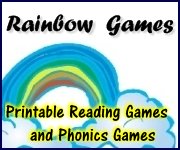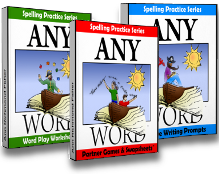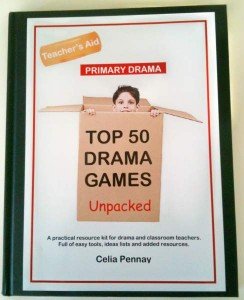Writing Step by Step Directions
The Magic Keys to Writing Directions
Writing step by step directions is an excellent first assignment in expository writing. Let these lesson plans for writing directions spark your own creative writing activities. The following ideas focus on the writing process itself, as well as the use of a specific writing mode. Kids will practice writing directions in a detailed, sequential format. They'll work with sequential words and phrases to facilitate transitions from one action to the next. Transitional words and phrases are the golden keys to writing directions. They connect the ideas of a paragraph from sentence to sentence or the flow of a story from one scene to the next. Without proper transitions, a page of directions deteriorates into a befuddled mess.
The following ideas focus on the writing process itself, as well as the use of a specific writing mode. Kids will practice writing directions in a detailed, sequential format. They'll work with sequential words and phrases to facilitate transitions from one action to the next. Transitional words and phrases are the golden keys to writing directions. They connect the ideas of a paragraph from sentence to sentence or the flow of a story from one scene to the next. Without proper transitions, a page of directions deteriorates into a befuddled mess.
Writing step by step directions is easily adaptable to writing across the curriculum. Allow your students to write detailed, sequential, how-to-do-it explanations for their favorite activities. Writing step by step directions as an activity within multiple intelligence lesson plans provides you with a means to differentiate instruction for each child you teach.
Let's consider just a few of the countless activities and skills related to the nine multiple intelligences. Everyone loves to talk about what they do best! Once you've taught your students how to effectively use transitional words and phrases, they might try writing step by step directions for a favorite activity.
Writing Step by Step Directions: Multiple Intelligence Connections
- Verbal-Linguistic: how to write a poem or short story
- Spatial: how to draw or paint an object; how to design and create a collage
- Bodily-Kinesthetic: how to perform specific dance steps; how to play a favorite athletic sport
- Logical-Mathematical: write step-by-step procedures for solving math problems
- Interpersonal: how to plan a party; how to be a good friend
- Intrapersonal: procedures for creative journal writing
- Musical: how to play a simple melody
- Naturalist: how to organize a gem or mineral collection; how to care for a family pet
- Existential: step-by-step ways of showing character qualities, such as respect or responsibility, in one's life
Writing Step by Step Directions: Quick and Easy Lesson Plans for Writing Directions
Let's use watercolor painting as our example activity for this lesson plan guide. Most kids have had experience with inexpensive watercolor sets since they were preschoolers, so they'll be quite familiar with those brushes and cakes of color! An added bonus: this holds natural appeal to your "spatially smart" students and visual learners!
Pre-writing stage:
- Step 1: As a prewriting activity, demonstrate to students how to create a watercolor painting, while giving a detailed description of your actions.
- Step 2: With students, brainstorm a list of transitional words and phrases to be used in writing a description of how to use watercolors. Remember, transitional words and phrases are the golden keys to writing directions effectively!
- Step 3: Instruct students to write a first draft of directions for creating a watercolor painting.
- Step 4: When kids have finished this task, make a painting exactly as they have written their directions. For example, if they write, "Put the paint on the paper", then place the watercolor set directly on the paper! It isn't necessary to do a complete painting or to demonstrate all of the sets of directions. Kids will soon understand that they have inadvertantly skipped steps when writing step by step directions.
- Step 5: Instruct students to rewrite their directions, adding any steps or details they missed on their first drafts.
- Step 6: Have kids peer edit one another's work by pantomiming the directions while the writer reads his or her work aloud.
- Step 7: If time allows, create paintings again using your students' directions. If not, begin the revision process.
- Step 8: Guide your students in writing their directions in paragraph form, complete with topic sentence, supporting details, and conclusion. See this article for teaching tips relating to the parts of a paragraph. Introduce the transitional words you brainstormed earlier, those magic keys to writing directions, into the writing. As a class, discuss how each word is used most effectively. Correct the final versions.
- Step 9: Direct students to create their own paintings using the step by step directions they've just revised. Use this activity in writing across the curriculum, creating lovely illustrations for many of the concepts you study! Or let your kids tap into their multiple intelligences by writing directions for favorite hobbies, activities, and interests. Have fun!
- Does the final copy have understandable directions?
- Is the text in a step-by-step, sequential format?
- Does the student demonstrate an ability to use transitional words and phrases for sequencing?
- Does the paragraph include a topic sentence, supporting sentences, and a concluding sentence?
Return from Writing Step by Step Directions to Creative Writing Acivities
Return from Writing Step by Step Directions to Creative Writing Ideas and Activities
Helping You Write Across the Curriculum!
copyright 2009-2013 www.creative-writing-ideas-and-activities.com
Our Most Popular Pages
5. Writing a Personal Narritive
10. Elements of Persuasive Writing
Recommeded Resources:
AnyWord(TM) Spelling Practice Series!
Worksheets, games and activities to use with any spelling words. Three volumes in all!
Stop Essay Pain!
LitWorks.com
Resources to help students prepare for literature examinations.
Teach Kids Drama!








